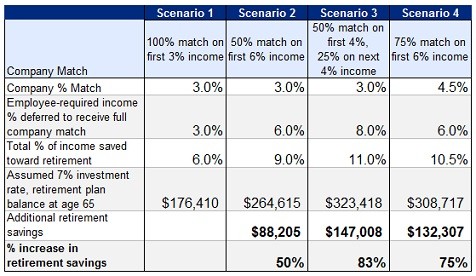401(K) Balance Up What Should You Do Now
Post on: 15 Апрель, 2015 No Comment

Follow Comments Following Comments Unfollow Comments
Have you looked at your 401(k) balance lately? If not, you may get a pleasant surprise as a surging stock market in 2012 and so far in 2013 have brought the average 401(k) balance to a record high. So what should you do? Should you invest more, take your profits and run, or just leave it alone? Let’s take a look at each of the options:
Option 1: Invest More Aggressively
When your investments are performing so well, it’s tempting to want to be more aggressive and put more in. Who needs cash and bonds when stocks are earning double digit returns? Of course, that’s the same mentality that caused many investors to load up on dot com stocks during the technology bubble in the late 90′s and into real estate in the years leading up to the financial crisis.
The fact is that while it may not feel like it, having a greater percentage of your portfolio in stocks means you’re taking on more risk. Will you be able to sleep at night when, not if, the market eventually experiences another significant downturn or will you be tempted to get out at that time and turn a temporary loss into a permanent one? You may answer risk tolerance questionnaires more aggressively now, but for a more honest assessment, ask yourself how you felt and reacted to the financial crisis of 2008. That wasn’t the first significant stock market decline and it likely won’t be our last.
Option 2: Take Your Money and Run
Some are advocating the other extreme, arguing that we’re already in another stock market bubble and it’s time to take cover and get out of stocks before it bursts. But there is some dispute as to whether we’re really in a bubble and trying to time the market is notoriously difficult. A market high could also be the beginning of a long bull market. Even if it’s a bubble and you get out in time, when will you get back in? There’s a reason there aren’t a whole lot of money managers with successful market timing records.
Option 3: Rebalance
Ideally, you can use the stock market highs as an opportunity to take some of your gains. After all, it’s just a paper gain until you sell. You don’t want to take all of your money off the table though since you can miss future earnings and the market is still more likely to go up than down in any particular year.
So how do you know how much to sell? First, take a questionnaire like this and see the guidelines of what percentage of your portfolio should be in stocks according to your time frame and risk tolerance, and adjust your portfolio accordingly. You’ll then want to rebalance it periodically (at least once a year) to make sure that your portfolio stays in line.
For example, let’s say you’re a moderate investor and your target is to have 60% of your portfolio in stocks and 40% in bonds. After the recent run-up in stocks, you may now have 70% or even 80% of your portfolio in stocks, which is more risk than you’d like to take. You would then rebalance by selling enough stocks and buying enough bonds with the proceeds to bring your portfolio back to a 60/40 stock/bond split.
In doing so, you’re selling the stocks while they’re relatively high. When stocks eventually fall in price and you have 40% in stocks, you would rebalance again and move money out of bonds and buy stocks while they’re relatively low. This strategy can help you both manage your risk and even potentially increase your returns. You’re following Warren Buffett’s advice when he was asked the secret to getting rich by investing: be greedy when others are fearful and be fearful when others are greedy.
The best part is that you don’t need to be Warren Buffett to implement it. If you have money in an asset allocation fund like a balanced or target date fund, it’s already being rebalanced for you. Your retirement plan may also have an automatic rebalancing feature. Otherwise, it only takes a few minutes and a calculator.
For more sophisticated investors, the strategy can be enhanced by adding additional asset classes such as cash and real assets like real estate and commodities that can do well in periods of rising inflation, which tends to hurt both stocks and bonds. The more assets you have that move in different cycles, the more likely you are to have something doing well in any given year. For example, stocks and real estate were hit hard in the 2008 financial crisis, but long-term government bonds were up by double digits. Rebalancing would have caused you to take some of those profits and buy stocks and real estate before they rebounded.
Are we in a stock market bubble? What will be the top performing investment next year? Who knows? If you’re adequately diversified and rebalance, it doesn’t really matter since you can take your profits from whatever does well and reinvest them in whatever investment is down. Today’s losers can be tomorrow’s winners and vice versa. As they say, every dog eventually has its day.
Liz Davidson is CEO of Financial Finesse , the leading provider of unbiased financial education for employers nationwide, delivered by on-staff CERTIFIED FINANCIAL PLANNER™ professionals. For additional financial tips and insights, follow Financial Finesse on Twitter and become a fan on Facebook .














